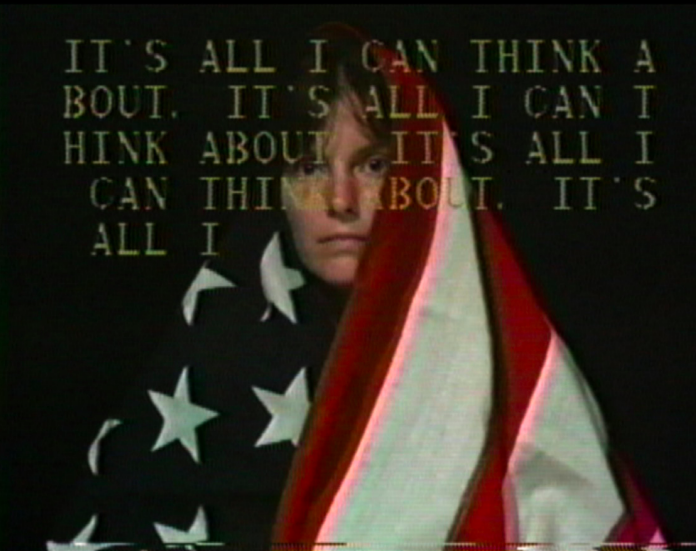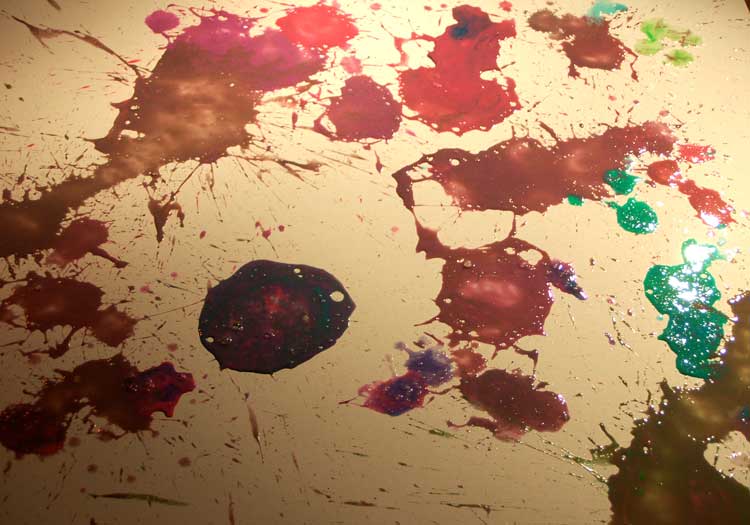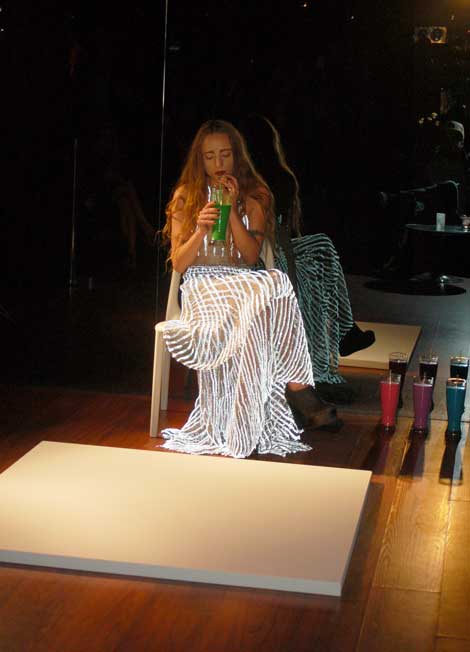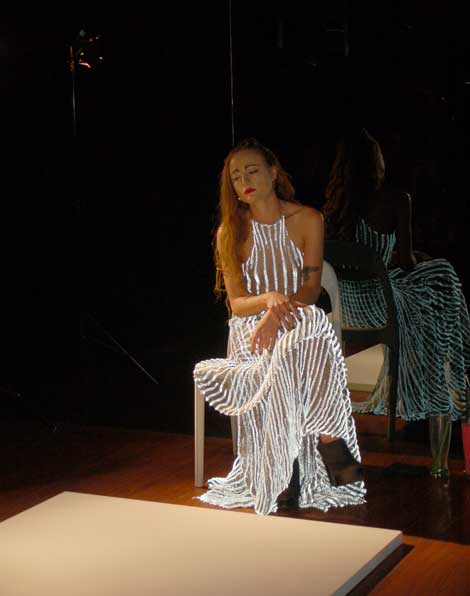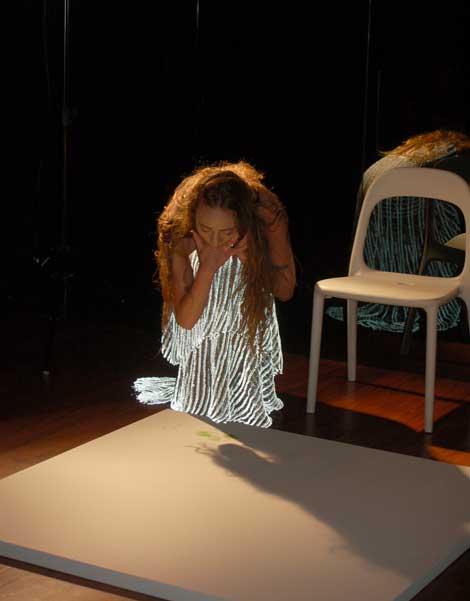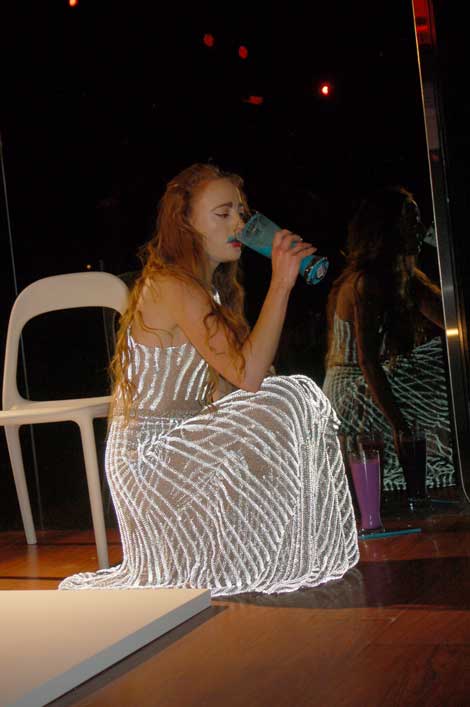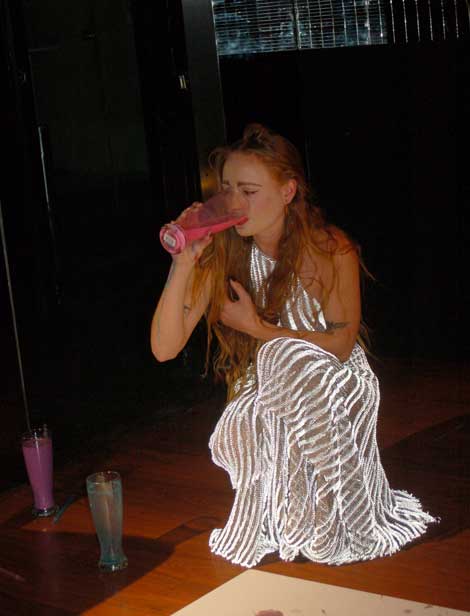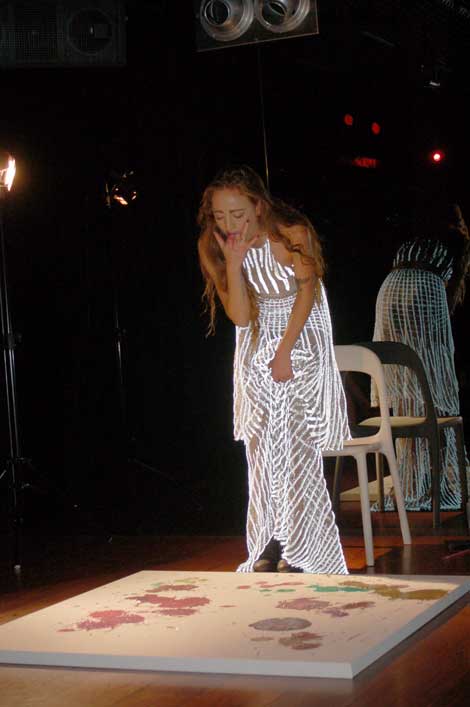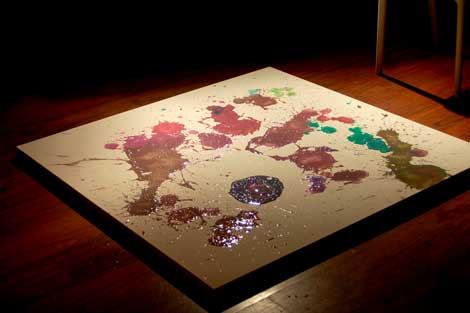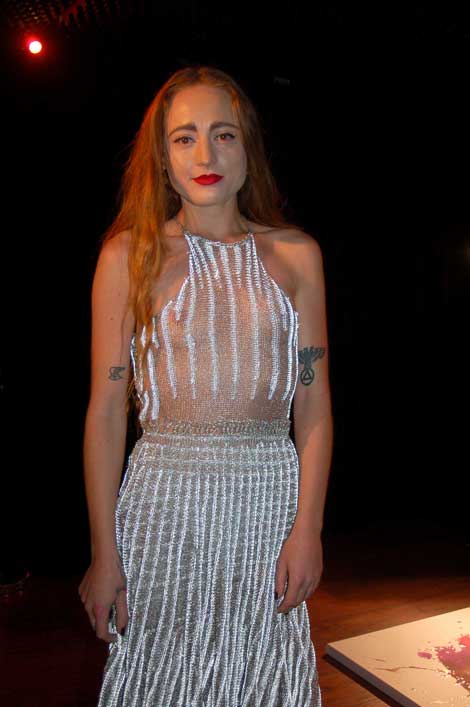Your cart is currently empty!
Tag: body art
-
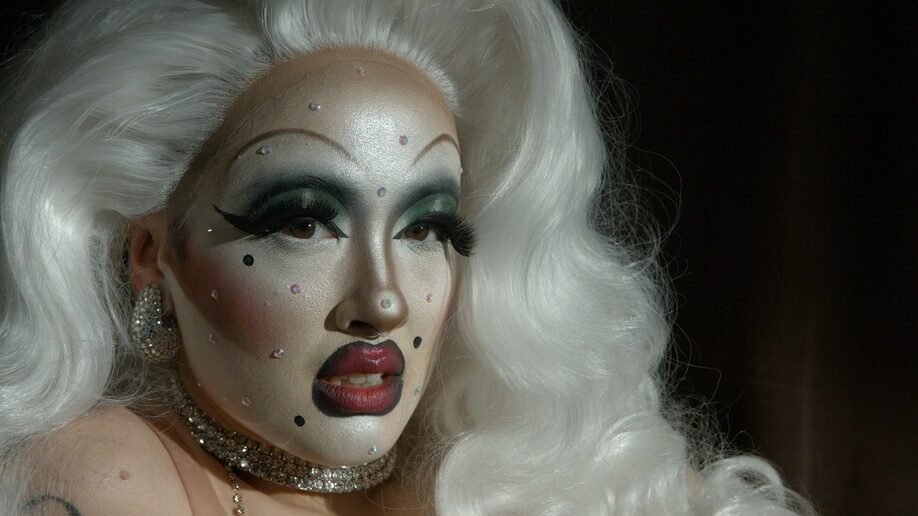
PICK OF THE WEEK: The Condition of Being Addressable
Institute of Contemporary Art, Los AngelesAt the ICA Los Angeles, curators Marcelle Joseph and Legacy Russell have assembled 25 artists whose practices engage with the construction of identity and the self as subject –or, as Judith Butler puts it, The Condition of Being Addressable. This international and intergenerational group of artists present overlapping and diverging approaches to subjectivity and self-imaging that considers the relationship between the body and language and complicates the distinctions between signifier and signified. Language takes many shapes throughout the show–projected in song, layered over images, uploaded onto screens, or in the case of Mary Kelly, embedded in lint.
Approaching the entrance to the exhibition, I quickly notice the number of installations involving sound. Overlapping voices leak through the walls of the gallery, pushing and pulling for my attention as if competing to be addressed. In the distance, I hear E. Jane’s version of the No Doubt song “Just A Girl” which quickly infiltrates my millennial neuro pathways. I hum along. Oh, I’m just a girl, living in captivity. Your rule of thumb makes me worrisome. The show is not installed in chronological order which allows for surprising and exciting moments of dialogue between artists. A work from Ana Mendieta’s Silueta series is situated next to a photograph by Tiona Nekkia McClodden, who creates their own silhouette as it relates to Black embodiment. In another installation, Lynn Hershman Leeson prompts the viewer to take on the role of voyeur, while in the next room, Aria Dean places the viewer under a “dummy surveillance camera.” In her book Self/Image, Amelia Jones notes the importance of retaining a kind of tension between the subjective and objective, which allows for “images of the body that are immersive rather than safely contained, bounded, and thus potentially trapped by an external gaze.” Placing these artists in dialogue emphasizes this tension and addresses shifting modes of communication and representation. Feminist and Queer theories and histories intermingle in new and immersive ways, creating opportunities for reflection and dialogue.
Artists included in the exhibition: Hannah Black, Judy Chicago, Aria Dean, Anaïs Duplan, Caspar Heinemann, Lubaina Himid CBE, E. Jane, Clotilde Jiménez, Miatta Kawinzi, Mary Kelly, Lynn Hershman Leeson, Tiona Nekkia McClodden, Ana Mendieta, Ad Minoliti, Troy Montes Michie, Toyin Ojih Odutola, Athena Papadopoulos, Imran Perretta, Sondra Perry, Tschabalala Self, Lorna Simpson, Sin Wai Kin, Diamond Stingily, Jessica Vaughn, and Zadie Xa.
Institute of Contemporary Art, Los Angeles
1717 E 7th St
Los Angeles, CA 90021
On view through September 2, 2022 -

how we are in time and space
Armory Center for the ArtsIt’s all I can think about. It’s all I can think about. It’s all I…
Since the news broke revealing the Supreme Court’s green light to overturn Roe vs. Wade, it’s all I can think about. It is tremendously difficult to avoid feeling the progress forged by decades of activism is now lost. I found reprieve from this permeating sadness upon visiting the Armory Center for the Arts to see the exhibition “how we are in time and space” featuring artists Nancy Buchanan, Marcia Hafif and Barbara T. Smith. This was my second time seeing the show — returning to the work with eyes tinged with rage and disappointment. This widely praised exhibition is worth seeing and revisiting; curated by Michael Ned Holte, the show features a range of artwork, documentation, and ephemera by the three artist-activist friends and long-term collaborators. This trove of material emphasizes the deep sense of friendship and support that guided their interrelated practices, united in their deep desire for social change. Their stars first crossed as MFA students at UC Irvine (the program’s first 1971 cohort). Two years later marked the 1973 Roe V. Wade ruling, and as Holte and other art historians have posited, Roe had an overarching impact on feminist ideas and activist strategies of the early 1970s, a period that also marks the emergence of what Amelia Jones calls “body art.” While this history of second-wave feminism is not without its privileged fractures, the art-activist networks that emerged during this period in Los Angeles were integral to the advancement of Women’s rights in America. As we move forward in protest and action, it’s crucial to listen to these histories of resistance and their collective screams.
Armory Center for the Arts
145 North Raymond Ave
Pasadena, California 91103
On view through June 12, 2022 -

Puke Performance Artist Paints The Standard
Puke performance artist Millie Brown just returned from the South by Southwest Festival where she “performed” with Lady Gaga. The UK artist has recently relocated to Los Angeles and painted her colored vomit canvas to a very small crowd in a rare performance at club Mmhmmm at The Standard, Hollywood, Saturday night. There were a little over 20 audience members, half of them photographers; the other half working their iPhone video cameras.
Brown entered a makeshift stage a little before 8pm with a single spotlight on her. She was dressed in an exquisite sequenced sheer floor-length dress revealing her slender figure (near anorexic?) and chunky black wedge heels with her flowing waist-length sandy-colored mane. She sat on a chair with four tall glasses of chalky-colored milk on the floor beside her with a blank white gessoed-canvas lying flat in front of her. She quietly sat down in a chair and sipped her first glass of green milk from a straw (maybe a third of its contents), very prim and proper, not an ounce of spillage on her lap. She put the glass down and contemplated the empty canvas before her. She then proceeded to get up and walk toward the right of the canvas, sweeping her dangling golden locks away from her face as she bent over the canvas. She spread her fingers of her right hand and daintily poked her forefinger and middle finger all the way into her mouth. She began to retch a little, but nothing was coming out. She did it again, her body trembling a bit. There—she finally got a little of the green liquid to come up and spill onto the canvas. Not wholly impressive for a vomit artist, but there were three more glasses (and colors) to go.

Brown drinks from her first glass of green liquid 
Brown contemplates the empty canvas 
Brown purging her first round of “paint” Accompanying the performance was a looped operatic soundtrack of a diva singing “meow, meow, meow” stretching out each vowel, then an actual recording of a cat’s meow…with a laughing audience (laugh track?) every time the cat’s meow came on. That lent a bit of humor to the performance, but then it’s hard to laugh while watching someone throwing up in front of you. Personally, I have a weak stomach for this kind of stuff, and found myself gagging several times. Often I had to look away for fear of making her painting a collaboration.
Her second glass was an aqua tint. She now had a blue mustache and drank slowly and deliberately from the glass, sans the straw. At this time we were all rooting for her to get a good ralph on, for the sake of the painting. There were a few splatters, but more bile than color.

Brown’s second glass of aqua-colored milk 
Brown’s third glass of magenta-colored milk 
Brown “painting” Her third glass of liquid was a magenta color and she still seemed to be having difficulty regurgitating. It was disturbing as it seemed she might be in pain. Without deconstructing this performance, many issues start to arise. Is this about eating disorders and purging—these are seemingly obvious references. With the repeating bizarre soundtrack, and Brown now starting to look disheveled with streaks of bile and colored liquid running down her face, one was just hoping for her to hurry up and get through this. She has yet to get a good projectile vomit going, and that’s now what the crowd was there for. Finally, on her third and fourth glasses, the liquid started spewing out and the painting was starting to “fill” up. The audience’s concern for the painting was palpable and the barf was starting to resemble a painter’s medium.
Aside from the spectacle value of this performance, it was very emotional. The British artist tidied up before coming out after her performance and made herself available to the small crowd of people that remained. I approached her and my first question was, “Are you okay?” She responded yes and didn’t seem bothered by my inquiry. She looked like a beautiful delicate flower, but her constitution cannot deny her strength. Brown told me her art is about using her body and she’s been doing this for 10 years now. Her paintings are for sale and I’m not entirely sure of the archival quality of vomit, but her aim is true.

Brown’s finished canvas 
Millie Brown after her performance Photography by Lynda Burdick
